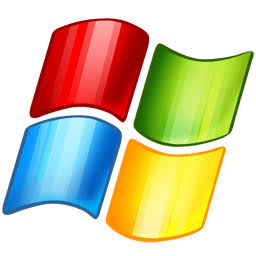I’m bored and want to practice my Rust skills. I am the creator of open-tv. If you have any idea for a linux desktop app, even if it seems quite complex, I will take it.
1 Custom GLIBC locale configurator
Pick date format, time format, currency I’m currently using a weird combination of English, German, and Danish and it still doesn’t fully do what I want (time is separated with a dot)
2 System hosts manager
Search, detect conflicts or other issues and add new items.
3 XCompose manager
I made something like this myself some time ago but it uses the outdated GTKSharp library and misses several features such as conflict detection. https://github.com/QazCetelic/Composition
4 Package manager
This might be a bit complicated, but it would be really neat to have an app to manage packages that doesn’t freeze, crash or fail.
5 Port your app to tauri
I saw you’re using Electron, you could port it to Tauri https://tauri.app/
It used to be tauri, but due to a bug in tauri that lasted more than a year, I had to switch to electron. I’ve been thinking of switching back, but I’ve got other priorities
Voice assistant that allows to perform common tasks like setting up calendar events, sending emails, opening apps, etc. Bonus points for “connect to server abc” and the assistant would open the terminal and ssh to abc server.
I would love a radarr/sonarr style app but for YouTube with sponsorblock built in.
edit: sorry I missed where you said desktop app
I wrote a version of this in Python a few years ago, but it depended on external tools like ffmpeg to work, limiting its portability. The Python requirement was also a major factor for adoption.
If it were ported to Rust, doing the (de)serialisation internally, I believe that it could have far-reaching implications on how we share and consume news:
https://danielquinn.github.io/aletheia/
If you’re interested, I presented the Python version at PyCon UK a while back.
Here is an alternative Piped link(s):
Piped is a privacy-respecting open-source alternative frontend to YouTube.
I’m open-source; check me out at GitHub.
Cool project. Perhaps something could be implemented on the fediverse. It might even help prevent people from cropping out credits 😀.
That’s an interesting thought. There’s a lot of cases you see where people have stripped a comic’s name from the bottom of the image, but that’s not really what this project was designed for. Aletheia will guarantee you that the person/company sharing the media is who they say they are, but critically it won’t prevent infringement.
The example I give in my talk is that InfoWars could take a BBC news story and say “we made this”, but it wouldn’t let them modify that story and claim that “the BBC made this”. The goal is to be able to re-connect what someone is saying with the reputation of the person saying it, with the hope that we can start delegating our trust to individuals and organisations again.
A music player for Jellyfin (that support SyncPlay)
doesn’t that exist already? I could swear I saw at least 2 on flathub
Only for movies, not for Audio only, and they mostly don’t support Sync Play (except for the official Client)
But if I missed one feel free to send me the links!
(I know that Finamp are working on a Desktop version though, but not out now and don’t support SyncPlay)
Jellyfin-mpv-shim supports SyncPlay
A gtk app for YouTube and/or twitch intended for media PCs would be neat, with controller/remote support and ui optimization for air mice.
I don’t like the ux of kodi very much and trying to get it to play YouTube has been a nightmare 😅 a simple app with a decent user interface would be very welcome
A budget app. I’m tired of all the good ones being web apps that spy on you. Multiple accounts, recurring expenses, ability to set goals, there’s a lot of features you can implement (or not) depending on how far you take it.
Currently I use https://play.google.com/store/apps/details?id=com.onetwoapps.mh which gets the job done but I want similar functionality outside of android.
Have you tried plaintextaccounting? I am using hledger, it works very well for me.
hledger actually seems like it’ll fit my use case rather well. Thanks for mentioning it!
A modern UI for ClamAV or a Subsonic Music Streaming client (In gtk4)
Something that gives you a reminder after a certain time of using a specific program (a game for example). I wanted to make it on my own but my coding skills are absolute garbage so it probably wouldn’t work very well.
This might help https://codeberg.org/unfa/HyperTimer
edit: Video by the creator https://youtu.be/rmUZ_iem1xw
it needs to be manually set, but a script to run this when you launch the app/game maybe?
“application”, not “app”. Please don’t let phone tech companies enshittify our language.
Enshittify/enshittification must be the most overused and most incorrectly used buzzword going around at the moment. Even more so than “AI”.
People shortening application to app is not enshittification.
Application is a pretty cumbersome word, too. “Look for XYZ in your application store”, “Go to application view”, etc just doesn’t roll off the tongue as well.
I was using the term “app” long before smartphones were a thing. That said, “program” was the more commonly-used term for me in the 90s.
Sticky notes, but they accept markdown and mermaid syntax
Option 2: a Windows XP Paint clone. Seriously, all the paint clones you can get on Linux, like gnome paint, just don’t work properly
If you’re content with a web-based JS-App, try https://paint.js.org/
No selection, copy or paste working yet, but looking good thus far
KolourPaint works very well for me.
An actually good alternative to Notion for Linux.
Appflowy might not be there yet, but it is improving fast
Yes I know about AppFlowy and also about Anytype. However AppFlowy feels off for some reason and not as stable. Anytype feels pretty good but it has the issue that you can’t store and sync more than I think 1 GB of data. You could self host a sync server but that’s extra complicated with that software for some reason. So it’s not really a good alternative either. :/
Obsidian 1:1 open source alternative.
LogSeq doesn’t do it for you?
nope, logseq is good for canvas and new knowledge base, but doesn’t fit for the my existing datalog requirements.
The mention of datalog confuses me. I know it as a programming language. Does it mean something else for you? And what do you mean by “canvas”? I know about painting on a canvas and similar usages as well as the verb “canvassing” for soliciting for votes.
Not the programming language, datalog here is referring to highly interlinked knowledge base,
canvas is logseq whiteboard version of Obsidian, like for mind map or creating data flow/logic diagrams.
I would kill for this. Trying to get logseq, or any other markdown editor to play nice with an existing obsidian vault is a nightmare. And none of them are nearly as feature complete or expandable.
unrestrictive nature of Obsidian is simply top notch.
Is this sarcasm, or did you not understand their comment?
I was talking about the community extension integration, now about editors, I was easily able to switch between them. The one I was having the most difficulty with was Logseq."
a 🔥blazingly fast🔥 voxel based open world RPG with soulslike and medroidvania elements
Or maybe a 100% science-based dragon MMO?
A wayland screen recorder. Not everyone needs a complex app like obs. Also, a jellyfin/emby front end maybe?
Like Kooha?
Also, GNOME comes with a pretty great simple screen recorder by default.
As far as I know, SSR doesn’t work with wayland. Kooha seems nice though, even if I can’t try it (I don’t use flatpaks).
Spectacle from KDE is also a pretty good default















